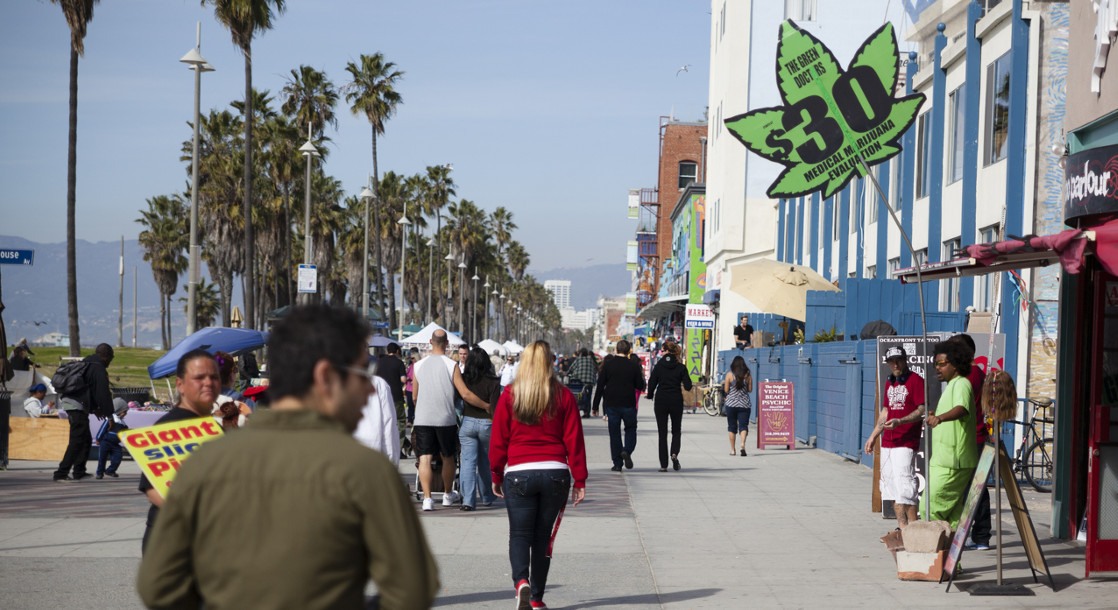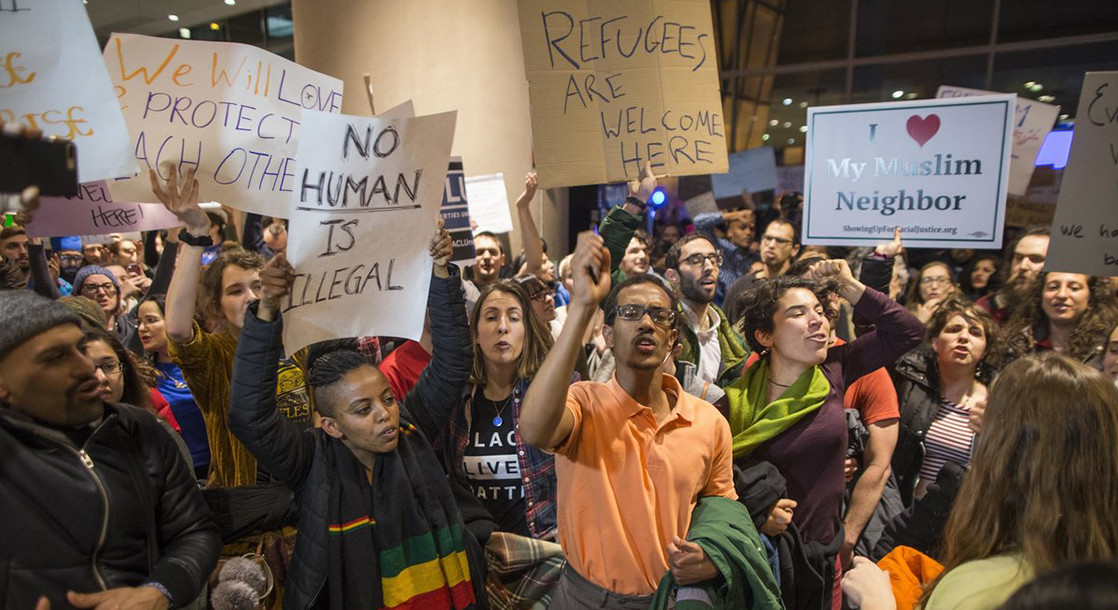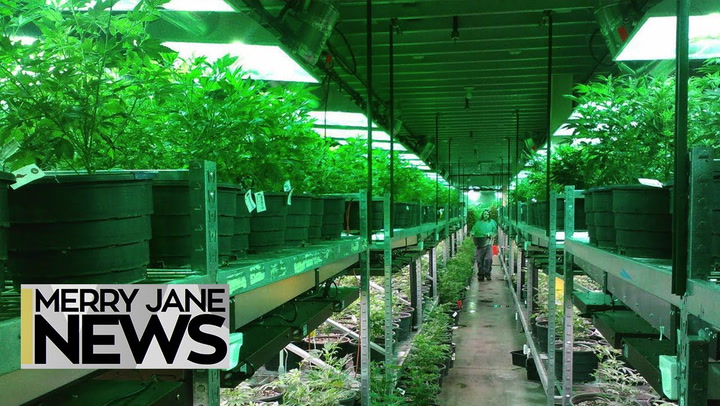Photo via Alex Potemkin
California's new adult-use and medical cannabis market launched a week ago, and nobody knows what's going on. Lawyers are in disagreement over how to interpret not only the new laws, but how they interact with the old ones, while layfolk are vulnerable to straight-up false information being disseminated online (#RIPProp215, for example).
There's been some confusion — especially on social media — about the status of medical marijuana now that California is implementing its recreational cannabis market. So the point of this article is to clarify, to the best of our ability, what's going on. While this is not legal advice, we'll present the opinions of legal experts to help you make sense of the new and old laws.
The vague nature of California's old cannabis legal system has been a major problem to begin with. Twenty-two years ago, the state passed Proposition 215 — a.k.a. the Compassionate Use Act of 1996 — which legalized medical marijuana, allowing patients and caregivers to possess, cultivate, and transport cannabis "based on their current medical needs." Then in 2003, the state passed Senate Bill 420, authorizing patients to provide patients with medical marijuana on a nonprofit basis.
Since 2004, when SB 420 went into effect, the idea has been that every cultivation facility, dispensary, and other canna-business theoretically functions as a patients cooperative or collective. In practice, there's been a great deal of debate about defining profit and what constitutes a reasonable amount of cannabis.
In 2016, California passed Proposition 64 to legalize recreational cannabis. Since then, policymakers have struggled through the unwieldy process of crafting regulations to dictate parallel adult-use and medical cannabis markets — a structure outlined by state Senate Bill 94, a.k.a. the Medicinal and Adult-Use Cannabis Regulation and Safety Act (MAUCRSA), which was passed by the state legislature last June. Even if a business wants to remain only medical, they'll still need to get licensed within 2018. And in order to get a state license to operate a commercial cannabusiness (for profit), they'll first need a local license. Based on whether a business is medical or adult-use, and what kind of business it is to begin with (e.g. cultivation, manufacture, retail, distribution, etc.), they'll need to apply for a particular type of license.
Prop 215 and SB 420 are still in effect, however. The provision of SB 420 that permits collectives and cooperatives will officially be repealed on January 9, 2019, according to California’s Bureau of Cannabis Control — but until then, it can continue to be used as a defense in court against state prosecution, especially for the bulk of canna-businesses that are still unlicensed. (As for those R.I.P. Prop 215 tombstones and hashtags floating around Instagram? "That's bullshit," according to one expert.)
This isn't true; Proposition 215 isn't going anywhere.
"Prop 64 in no way alters Prop 215," asserts Dale Gieringer, director of California NORML (National Organization for the Reform of Marijuana Laws). "Medical patients have a broader right to grow and possess than adult users. They are theoretically permitted as much as they need for their personal medical use, consistent with local ordinances."
However, there is still some debate as to whether local land use rights trump even the old medical marijuana laws. If you're violating local law, it's harder to raise the medical defense, beyond what's reasonable for personal use as a patient. In Kirby v. County of Fresno (2015), for instance, in which medical marijuana patient Diana Kirby filed a complaint against Fresno's cultivation ban, it was concluded that "the ban on cultivation adopted under County's authority to regulate land use does not conflict with the [Compassionate Use Act] or the [Medical Marijuana Program], which do not expressly restrict local government's authority over land use." In other words, the court sided with Fresno's land use rights.
The issue is that there's no specific authority, beyond case precedent and guidelines from the state attorney general, explains Bruce Margolin, criminal defense attorney and director of LA NORML [full disclosure: also the father of the author]. "I get from other lawyers we have a fight on our hands and still don't have the answer," he says. "In effect, [the old laws] still left cities and counties to make a decision as to what they'll allow, so the answer is if you're in a quandary about it, so is everyone else." If you're brought to court, you can hope the prosecutors won't invoke precedent from cases like Kirby v. Fresno, but generally speaking, Margolin says, no one has come down from the court of appeals with proper guidance.
Nonetheless, if you're operating commercially in violation of local regulations, you can be subject to civil fines (which is different than being criminally illegal). Those fines can add up to several thousand dollars a day, for every day you remain in violation of civil cannabis code. But it remains to be seen whether law enforcement will actually go after operators who violate these local laws before the start of 2019.
Many businesses are currently operating in a legal grey area, legislated by Prop 215 and SB 420, until they get licensed and can fully adhere to the new regulations. That's the case in Los Angeles, for instance, which only allowed a handful of dispensaries operating under Proposition D (the city's previous law for medical dispensaries) to apply for the first phase of licensing on January 3. Now these businesses must wait for local licensing before they can get state licensing, which could take at least a few weeks.
"In this moment, L.A. shouldn't be in this place where we're operating under Prop 215. We asked to be legal; we're not little outliers trying to skirt along," says Jerred Kiloh, president of the United Cannabis Business Association (UCBA) and founder of award-winning dispensary The Higher Path. "We did everything with the city and state in writing regulations. We wanted to be the first to follow them." But both the city and state were both slow in working out the rules: Less than two months before the launch of the new market on January 1st, the state of California finally released emergency regulations, while localities like L.A. lagged behind in solidifying their own legal weed laws.
"We asked lawyers, lobbyists, Lori [Ajax] and Dean [Grafilo] [from California's Bureau of Cannabis Control], and the attorney general — we asked everyone for clear guidance, and no one had it," says Kiloh. "You can't put stakeholders in the middle of this lack of clarity, because if all those people can't determine how you're supposed to operate in all those rules and regulations clearly, consciously, and professionally, then how can we be held accountable for operating any differently than according to the laws given to us?"
As Kiloh awaits commercial licensing, he remains operating under the cooperative model for the time being. He also backstocked his dispensary to last the next couple weeks as if "waiting out a storm." (Under the new rules, only licensed dispensaries can get product from licensed growers, manufacturers, and distributors.) "Until the license gets issued, we're still operating under SB 420, but I don't see how someone could sustain that for a full year and still be competitive in the commercial cannabis market," he says.
Meanwhile, for those of you who aren’t in the industry, but are concerned about how you'll still access cannabis, keep this in mind: If you're a patient, your regular old doctor’s recommendation is still sufficient to allow you access to medical dispensaries. However, if you want to avoid the state sales and use tax of 7.5 percent when purchasing medical pot, you'll need a state ID card for patients as opposed to just a recommendation from a doctor — a significant change detailed in section 163(f) of the new rules under MAUCRSA. You can get an official state ID through your county's board of health, but even with the state’s card, you're still subject to the new 15 percent excise tax levied on all cannabis product sales.
Overall, the lack of clarity, compounded with conflict between state and local laws, puts a number of cannabis businesses at risk of extinction. Fed up, some argue that California's intention to "legalize" has been obscured by a series of "tax and regulate" hoops that only few (so far) can navigate. Existing operators have only a year to get into compliance, but in the time that takes, they could miss out on market share claimed by the operators who get licensed first and develop relationships with each other. "This transitional space needs to be here," says Kiloh. "But we need more transitional time so the supply chain can be more robust. We want to get as many people legal as possible and make the deadline. As a group, we won't be operating in the cooperative model very long; it's not sustainable in the commercial market."











